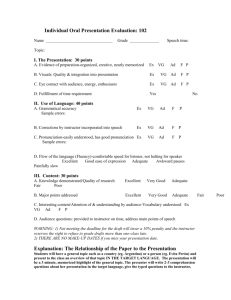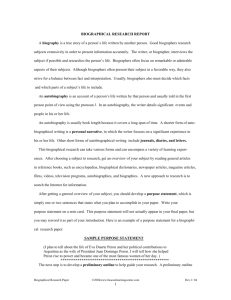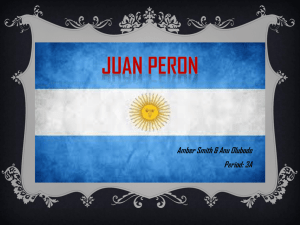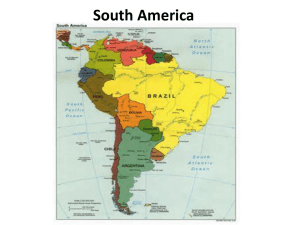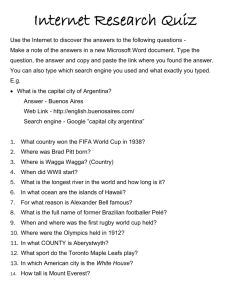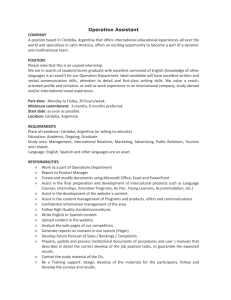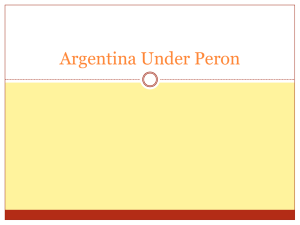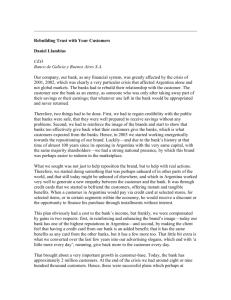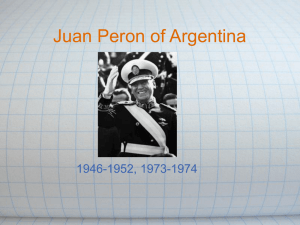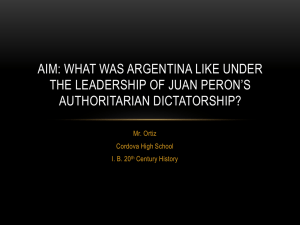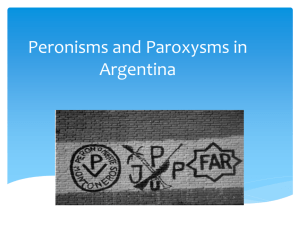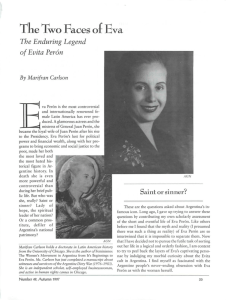The events that happen in society have a tendency of shaping the
advertisement
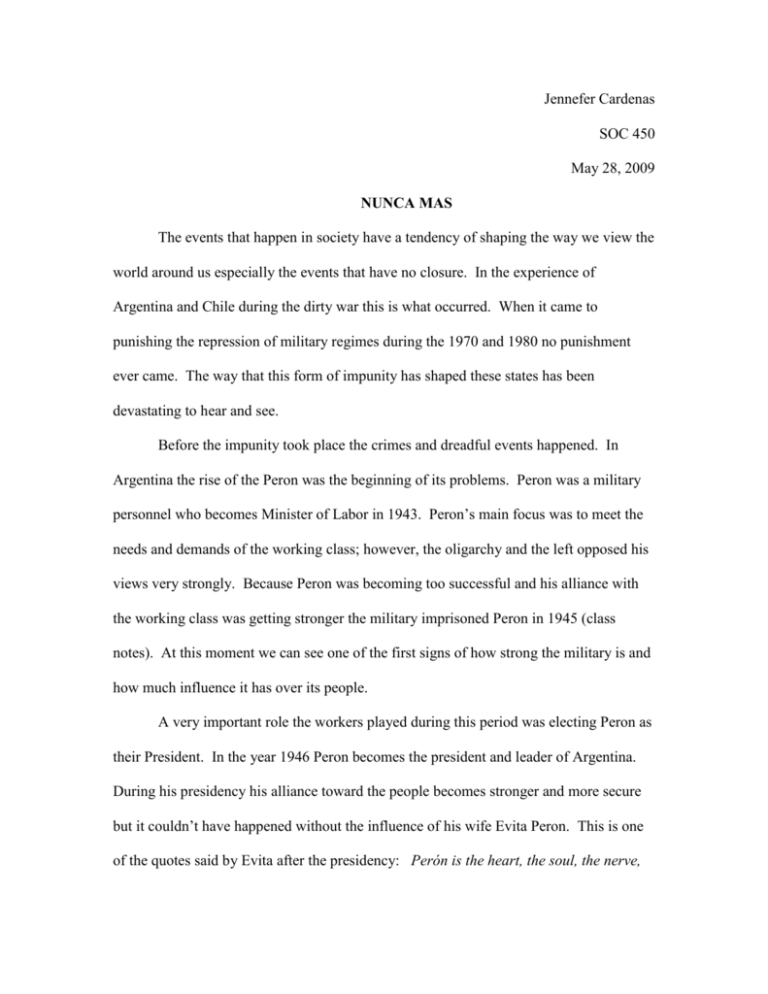
Jennefer Cardenas SOC 450 May 28, 2009 NUNCA MAS The events that happen in society have a tendency of shaping the way we view the world around us especially the events that have no closure. In the experience of Argentina and Chile during the dirty war this is what occurred. When it came to punishing the repression of military regimes during the 1970 and 1980 no punishment ever came. The way that this form of impunity has shaped these states has been devastating to hear and see. Before the impunity took place the crimes and dreadful events happened. In Argentina the rise of the Peron was the beginning of its problems. Peron was a military personnel who becomes Minister of Labor in 1943. Peron’s main focus was to meet the needs and demands of the working class; however, the oligarchy and the left opposed his views very strongly. Because Peron was becoming too successful and his alliance with the working class was getting stronger the military imprisoned Peron in 1945 (class notes). At this moment we can see one of the first signs of how strong the military is and how much influence it has over its people. A very important role the workers played during this period was electing Peron as their President. In the year 1946 Peron becomes the president and leader of Argentina. During his presidency his alliance toward the people becomes stronger and more secure but it couldn’t have happened without the influence of his wife Evita Peron. This is one of the quotes said by Evita after the presidency: Perón is the heart, the soul, the nerve, and the reality of the Argentine people. We all know that there is only one man in our movement with his own source of light. We all feed off of that light. And that man is Perón!" (1951 speech by Eva Perón). During this period Evita was becoming very well known and was becoming more empowering than Peron himself. In 1951 Evita was one of the candidates running for vice president but the military did not like this one bit. Evita had too much influence towards the working class of Argentina and the military people could see that very clearly. Because of her influence Evita had she was denied vice presidency and a year later died of cancer. After the death of Evita, Peron lost power and was sent into exile but later returned in 1973 and assumed presidency once again with the subtle difference of making his new wife vice president (class notes). His new wife Isabel was a very poor choice for vice president and wife as she had very big shoes to fill. A year later, Isabel became the president of Argentina following the death of her husband, Peron. Isabel did not know much about being a president and soon was overthrown by the military Coup. During the time Peron was away and following his death working condition changed dramatically. It was obvious that having the military in charge they were going to follow their ideology towards labor issues. This became known as the Revolutionary period. During this time an upsurge of different revolutionary groups evolved; a main group was the montoneros. The montoneros were pro-peronist and exercised armed propaganda as well as killing military conscripts. During this time General Jorge Rafael Videla and Emilio Eduardo Massera were among the top military and navy personnel involved. When the military entered the state they saw themselves as ruling caste of Argentina. During their time in Argentina a rein of terror elapsed: disappearances occurred, youth and people were beaten and taken away, homes were trashed/pillaged, anonymous officers were often involved and abductions occurred (class notes). During abductions people were tortured, raped, and pregnant women were robbed of their babies. This was no longer a revolutionary period but had escaladed to a war, a war that came to be known as the Dirty War. During this very fearful period many people were disappeared yet some people who disappeared reappeared and shared their stories. Many people who reappeared said that they had been tortured, yet what happened to the people that never showed up again? Many of these people still had families who loved and cared for them very deeply and so, many organizations evolved with the basic aim of finding their children. Some of these groups were the Mothers of the plaza de Mayo and CONADEP (national Commission of Disappearance of persons). CONADEP sounds like an organization that would really dig deep and get the job done especially with aim to investigate and take testimonies yet it held no Subpoena power and couldn’t force people to testify. Another downside to this organization was that the main target was the disappearances of people and no other crimes committed. During the first three Juntas some prosecutions were made: six generals and three admirals were prosecuted. The role of the human rights organization especially CONADEP was not what should have been. Families were expecting some justice and prosecutions of the criminals that had killed, tortured, and stolen their children/grandchildren’s lives yet they were not being brought to justice. A lot of this had to do with the influence of outside forces, in my opinion. During the Dirty War Argentina was not acting alone; it had various allies, and one of them happened to be the Church. Because of the involvement of the church the legal measures that should have been addressed have been ignored or pardoned. For example during Alfonsin’s time in office (elected 1983) he limited the accused based on some basic principles of due obedience. Some of the accused criminals testified that they were simply following orders from a person of greater superiority. How then would one truly know who would be imprisoned or not? The way they decided was to imprison all of the superiors; General Videla and Admiral Messera were among the ones imprisoned for life. By the year 1986 6,000 charges were filed against military personnel. Because of the vast amount of charges against military personnel the military reacted with threats and violence and a new law was passed: Punto Final. What Punto Final was all about was a 60 day deadline to file new charges, evidence too. This had a major impact on bolstering the military resolve. The pressure of the Dirty War and the complication of the military led for the resignation of Alfonsin bringing a new President to office, Menem. After the 1989 presidential election of Menem; he decided to pardon 213 military men and 64 guerilleros who had been previously charged. The levels of impunity have been very evident throughout the crisis in Argentina. The military were always one step ahead of the people and that is why the degree of this crisis was so vast. The military were not willing to recognize that their actions were wrong because if they did then they were criminals and if the military were criminals so was the Church. It was evident that the church had some capitol involved that bought their silence. Argenitina’s Dirty War is very openly addressed among the people now a day in contrast with the crisis that occurred in Chile. I think it has to do with the way the issues evolved. Chile was among the third Latin American countries to institutionalize state terrorism. On September 11, 1973 the government of Salvador Allende was overthrown by the Chilean military and quickly abolished virtually every institution that had the potential to oppose them. Unlike other terrorisms of this time the Chileans were very public about their objectives and their methods; there was nothing subtle about rounding up thousands of prisoner, and executing them in cold blood by shooting them. These open terrorism acts created a state wide fear and their new leader Pinochet gave them full access to it. During the military coup, the military sealed Chile’s borders for eleven days, turning the country into a huge prison camp for thousands of Allende supporters, and imposed an around-the-clock curfew. Radio broadcasts announced lists of persons required to turn themselves into the new authorities. Many people complied with these orders in order to clear their names, some were never seen again (State terrorism pg. 51). Sealing the boarder provided the military with complete control of Chile. Those who failed to follow the new rules were shot and were either dumped into rivers or left dying in the streets, which was the beginning of the soon-to-be routine practiced of “disappearing” the regime’s enemies. Many of the same things happened in Chile that I explain in Argentina, people were disappearing and being tortured in special torture facilities, however not everything was the same. A very powerful group called the DINA group was the core of the state terror apparatus. The leader of this group was Colonel Manuel Contreras. The members of the group had to have a mentality to exterminate all of Marxism’s followers. The DINA had many members, eventually reaching four thousand, and also had thousands of informants and collaborates. The DINA was a multifaceted secret organization that used its “practically unlimited power” to “conceal its actions and assure its impunity.” (State terrorism pg. 63) A major player in the overthrowing of Allende was of course the military but the United States also played a vital role. The U.S administrations spent millions of dollars to prevent the election of Allende and failed to do so when Allende got elected as president (State Terrorism pg. 48). Knowing this information we can assume that they must have had something to do with the overthrowing of Allende’s government. With the United States involvement gave an immediate sense of impunity to all involved. The United States could not get accused of doing such mass murder that would make them criminals. I believe that because of the interference of the United States, not a lot of legal measures could take place. I also believe that because the criminals could not get arrested and incriminated this sense of guilt is among the Chilean people. Although no help came from the judicial system, in part because they turned a blind eye, there was some organizations that helped and did their best to reconstruct a sense of safety. Some of the groups that came together to find and do something about their disappeared loved ones were some human rights activist. The ecumenical Fundacion de Ayuda Social de las Iglesias Cristianas was founded in April 1975 and continues to work today. The Vicaria de la Solidaridad, a ministry of the Archbishopric of Santiago, was created on January 1, 1976. These religious organizations did everything possible to protect the victims against the dual onslaught of repression and hunger, often at grave risk to their own personal safety. These organizations had some sort of protection from the Catholic Church unlike a different organization: FASIC. FASIC developed several specialized programs. Among these were family reunification, which helped families of exiles regroup abroad; services for children of the repressed; and counseling for torture victims and families of the killed and disappeared (state terrorism pg. 73). Some organizations focused on human rights education; while others were organizations of family members of victims of specific types of human rights violations. The first established was the Agrupacion de Familiares de Detenidos Desaparecido, founded in 1974. Argentina and Chile both experienced terrible things, the torture of their people, the overthrowing of their leader, the grief of losing a loved one, and the terror of living with it everyday. The similarities are very evident yet the differences are more hidden but can be seen throughout this paper. Chile’s people are still silenced and subtle of the issues that the people faced more than 20 years ago. The people are still living in fear, and part of it has to do with the fact that justice was not brought to these people. No closure was established. Argentine people are more open to the devastation and were also more exposed to showing their anti-military feelings when the Dirty War occurred. In Chile the military was more open, they overdid the terror to really insight fear into the people, while in Argentina the military was sneakier; hiding their faces and keeping quiet. One of the main differences was the involvement of different allies, Chili became allies with the U.S which became a form of impunity and Argentina with the Church, with the similarity that both allies were in it for the money. The last difference that I will mention is the different organization that began working with the victim’s and the victim’s family. The Chilean church was very involved with the poor and the victim’s. The priest and the church became known to the people while in Argentina the church was involved but in a different way. The church was an accomplice with the military, the reason: money exchange. The Catholic Church in Argentina is the State religion which means they get funding from the church. There are many more differences and similarities but the one’s I mentioned are the ones that really stood out to me the most. The impact of the Dirty Wars have caused a fear among the Chileans and Argentines that will probably never leave their hearts, however, I see this as not a negative but a positive. The people of these places have to remember what happened in those terrible days of torture and pain not to live with grief and sorrow all their lives, but to prevent a similar situation to ever occur again they have to practice and hold their head up high and say Nunca mas. Reference: Write Thomas (2007). STATE TERRORISM IN LATIN AMERICA: CHILE, ARGENTINA, AND INTERNATIONAL HUMAN RIGHTS. Lanham, MD: Roman and Littlefield. Dolan, Maureen (2009) Class Notes.
